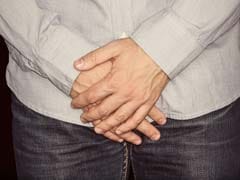Look out for these common signs of STDs in women.

Persistent itching or irritation in the vaginal area could indicate an STD
Both men and women are susceptible to contracting sexually transmitted infections (STIs), including STDs. However, certain biological, cultural, and societal factors can make women more vulnerable to acquiring and suffering from the complications of STDs.
In general, women have a higher risk of contracting certain STDs due to anatomical differences. The moist environment and delicate tissues of the vagina and cervix provide easier entry points for pathogens. For example, women are more susceptible to transmitting and acquiring HIV.
Some STIs can have more subtle or asymptomatic symptoms in women. This makes it harder for women to recognise the infection and seek timely treatment, creating a higher risk of transmitting or developing complications from the infection.
In the case of heterosexual intercourse, women are more likely to contract STDs from male partners compared to the other way around. In many instances, this is related to higher viral or bacterial loads in the genital fluids of men, making it easier for the infection to be transmitted to women.
Social and cultural factors can also contribute to women's increased vulnerability to STDs. These include inequality in power dynamics, social stigma, limited access to healthcare and education, economic dependency, lack of control over sexual decisions, and gender-based violence. These factors can prevent women from negotiating safer sexual practices or accessing proper prevention, testing, and treatment. Below we share some common signs of STDs in women. This can help accelerate the treatment process.
8 Common signs of STDs in women:
1. Unusual discharge
If you notice any changes in colour, consistency, or smell of vaginal discharge, it could be a sign of an STD.
2. Itching or irritation
Persistent itching or irritation in the vaginal area could indicate an STD. There may be other reasons behind it so it is best to seek professional help.
3. Pain during urination
If you experience pain or a burning sensation while urinating, it could be a symptom of an STD.
4. Pain during sexual intercourse
STDs can cause discomfort or pain during sexual activity.
5. Abnormal vaginal bleeding
Any bleeding that occurs outside your regular menstrual cycle, such as spotting or bleeding after sex, could be a sign of an STD.
6. Sores or bumps in the genital area
The presence of sores, warts, or bumps in or around the genital area may be an indication of an STD.
7. Lower abdominal pain
Some STDs, such as pelvic inflammatory disease (PID), can cause lower abdominal pain.
8. Flu-like symptoms
Certain STDs can cause flu-like symptoms, including fever, fatigue, body aches, and swollen glands.
It is important to note that these symptoms alone do not necessarily mean you have an STD, as they can also be signs of other conditions. If you suspect you may have an STD, it is crucial to get tested and seek appropriate medical advice.
It is important to note that the risk of acquiring STDs can be reduced through practicing safe sex, using barrier methods like condoms, getting regular screenings, and engaging in open communication with partners about sexual health.
Disclaimer: This content including advice provides generic information only. It is in no way a substitute for a qualified medical opinion. Always consult a specialist or your own doctor for more information. NDTV does not claim responsibility for this information.
DoctorNDTV is the one stop site for all your health needs providing the most credible health information, health news and tips with expert advice on healthy living, diet plans, informative videos etc. You can get the most relevant and accurate info you need about health problems like diabetes, cancer, pregnancy, HIV and AIDS, weight loss and many other lifestyle diseases. We have a panel of over 350 experts who help us develop content by giving their valuable inputs and bringing to us the latest in the world of healthcare.














